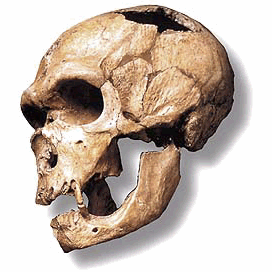Taxonomy and PHYLOGENY are important in the sciences because they're used to organize and categorize life on earth. A simple example of the differences between them is that phylogeny would be the bag of pencils you have (species) and taxonomy would be used to organize them by size and color (traits). For more information about how evolution happens, check out this LINK.
The words "Phylogenetic Tree of Life" is basically referring to the common ancestry in organisms, narrowing them down according to what they have in common.
LUCA is the common ancestor for all living organisms and from there, we have different groups. Let's focus on the Eukarya group as an example. If you look to the right of the figure, you'll find Animalia. From that group, we can narrow down our animals and species.
You can see that in the group Animalia, there are a lot of different animals. If you want to focus on the ancestry or taxonomy of the grizzly bear, the group narrows down more and more until you reach it. The scientific name of the grizzly bear includes the genus and species name. The names are always written in latin. The scientific community uses this system for every organism on earth so you can identify a specific one no matter what language you speak.
Binomial Nomenclature
It was first used by Carl Linnaeus who was a botanist (studied plants). The scientific name or binomial nomenclature of the grizzly bear is Ursus horribilis. The species and genus are always italicized with the genus capitalized and the species name uncapitalized. There are more than one kind of bear with the genus Ursus and any organism, related or not, can have the species name horribilis. To avoid confusion, scientists keep the genus and species names together.

An organism keeps the original scientific name given to them by whoever named them first. No two organisms can ever have the same scientific name and if they do, the new one has to change.
How you categorize something can make a taxonomic chart can make a huge difference. If you create a chart that shows all green things, it will look very different than if you show only plants. Scientists focus on accuracy and precision using DNA similarities in organisms to create the taxonomic chart. Things can look alike, but still be very different genetically.
Taxonomy has changed a lot over the years, but DNA sequencing has changed the name of the game for years to come. Carl Linnaeus has created a system of naming things that creates a universal way to identify species for scientists. Together these systems have paved the way for finding the order of life in the chaos.
Sources:
Biology: Concepts & Connections 9th Edition by Campbell 2017
Lecture Notes: Dr. Hannah Marsh, Human PreHistory, Fall 2014 & Dr. Daryl Goad, Fall 2014
Lecture Notes: Dr. Stephen Wilson, General Ecology, Spring 2015
#evolution #outreach #scienceoutreach #science #scienceducation #sciencecommunication #scicomm #scienceblog #blog #education #taxonomy #Linnaeus #familytree #bears #treeoflife







